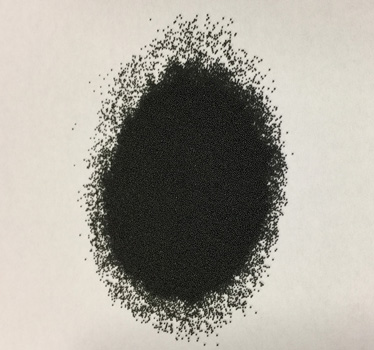Carbonised molecular sieves
Carbonised molecular sieves are the strongest sorbents used for thermal desorption; they are used to trap the most volatile compounds. They operate under a mixture of adsorption and molecular sieve principles. Where possible, avoid using these sorbents when sampling in humid environments, and consider dry-purging prior to desorption.
- Provide great performance for small/volatile analytes other sorbents have trouble retaining
- Low artefact levels, making them ideal for trace-level analysis
- Inert, suitable for use with reactive species
- Spherical and non-friable: easy to pack and hard-wearing
- Have a high surface area (highly porous)
Contact us regarding other sorbent material.
Product List
Showing 1/1 results

Sorbent- SulfiCarb
40/70- 10 g
Product Code
C-SLCRB
Overview
Unlike other sorbents, carbonised molecular sieves operate under a mixture of adsorption and molecular sieve principles, meaning their surface area is not a key indicator of their strength. The size and shape of the pores determine the analytes that each sorbent is most suited to. Carboxen 1003 offers the best performance of all the carbon molecular sieves for retaining ultra-light compounds while allowing breakthrough of water. Markes recommends using Carboxen 1003 for many air monitoring methods that may previously have specified Carboxen 1000 or CarboSieve SIII.
SulfiCarb (which replaces UniCarb) is similarly inert and has the same physical properties/similar performance for reactive sulfur species and light VOCs.
As carbon molecular sieves are not very hydrophobic, they may require dry-purging (removal of excess water) prior to desorption. This can be done off-line on a TC-20 or on-line for the tube and/or the trap. Trap dry-purging is unique to Markes, and is available as standard on UNITY-xr and all models of TD100-xr.
Weaker sorbents should be packed in front of carbonised molecular sieves to prevent them from irreversibly retaining high-boiling compounds during pumped (active) sampling. In contrast, for diffusive (passive) sampling, it is important to keep the surface area on the front of the sorbent bed open: a single bed of carbonised molecular sieves should sit directly on the primary gauze of an industry-standard sorbent tube to allow a 15 mm air gap between the sorbent and sampling environment (be sure to use a diffusion cap).
When working with carbonised molecular sieves, assume safe sampling volumes are reduced by a factor of 10 when sampling in air at >80% relative humidity.
Part numbers:
C-C1000 - C-C1003 - C-C569 - C-CSIII - C-SLCRB




